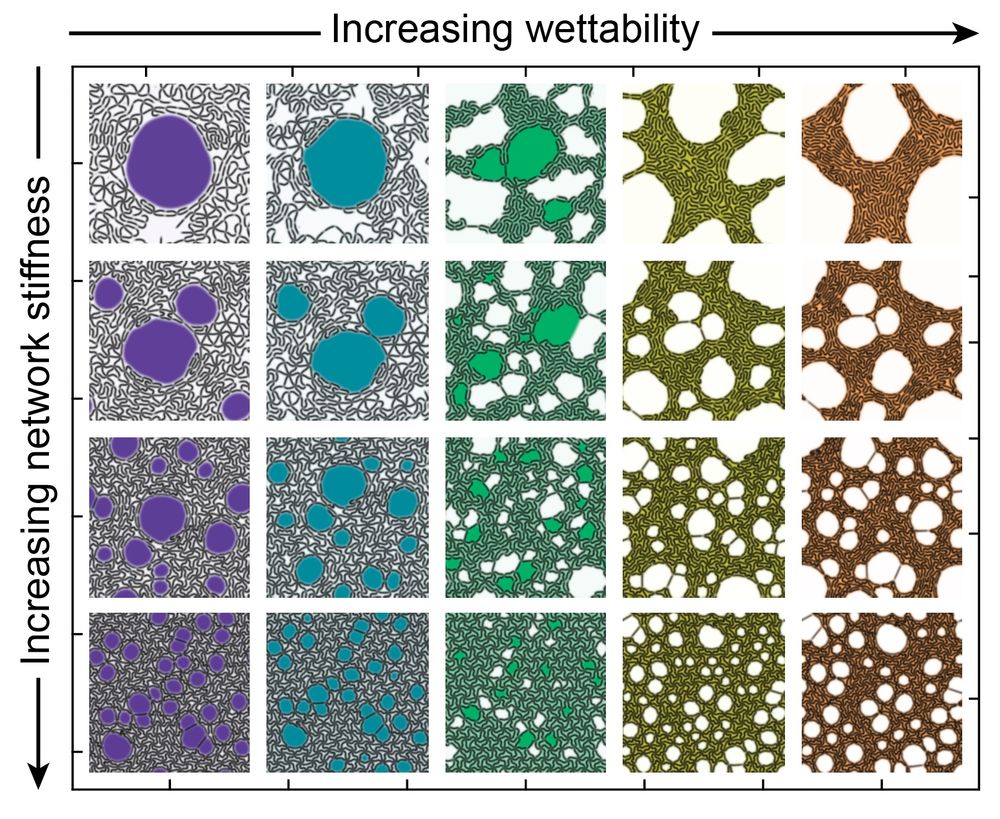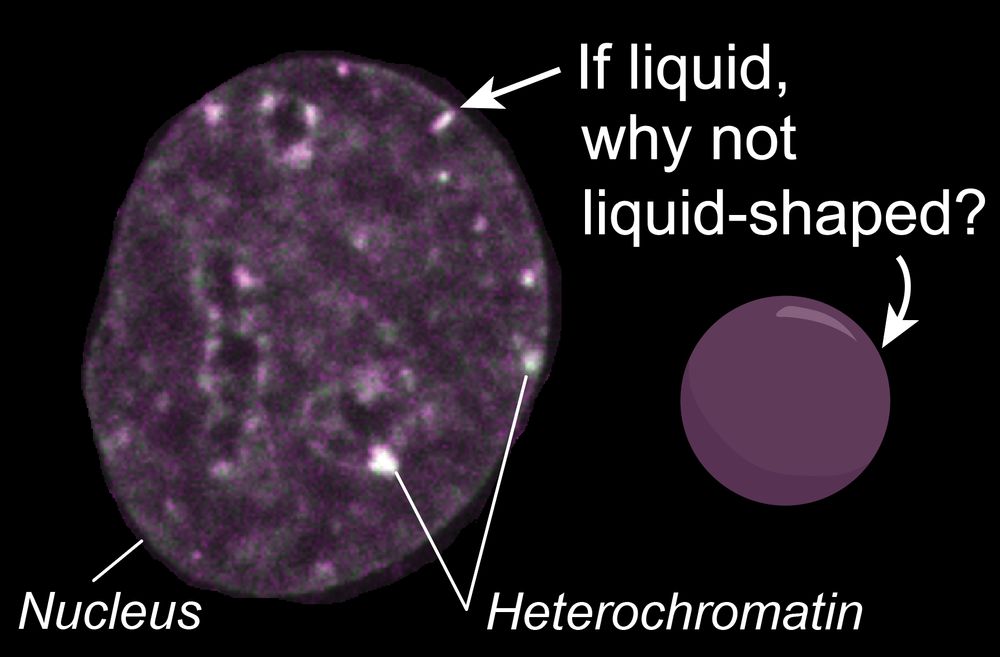AmyStrom.com

I'm a Lab Head, Principal Scientist in Discovery Oncology at Genentech.
I'll be searching for new targets to develop cancer treatments.
2nd photo is my newest friend on campus, decoy-ote.
@genentech.bsky.social


I'm a Lab Head, Principal Scientist in Discovery Oncology at Genentech.
I'll be searching for new targets to develop cancer treatments.
2nd photo is my newest friend on campus, decoy-ote.
@genentech.bsky.social

Surface tension and stiffness– not just binding affinity or location– shape genome structure.
Elastocapillarity offers a physical basis for mesoscale nuclear morphology, with implications for gene regulation and disease.

Surface tension and stiffness– not just binding affinity or location– shape genome structure.
Elastocapillarity offers a physical basis for mesoscale nuclear morphology, with implications for gene regulation and disease.

Stiffness arises from chromatin density, while wetting is controlled by the strength and extent of chromatin binding, with heterochromatic protein HP1alpha’s chromodomain providing strong wetting

Stiffness arises from chromatin density, while wetting is controlled by the strength and extent of chromatin binding, with heterochromatic protein HP1alpha’s chromodomain providing strong wetting
Nonwetting condensates in flexible networks cavitate and exclude fibers, while wetting condensates engulf and bundle them. Stiff networks inhibit growth.

Nonwetting condensates in flexible networks cavitate and exclude fibers, while wetting condensates engulf and bundle them. Stiff networks inhibit growth.


We investigated whether mechanical interactions between a condensate and a fiber network can explain the variety of morphologies seen in phase-separated nuclear compartments
www.biorxiv.org/content/10.1...

We investigated whether mechanical interactions between a condensate and a fiber network can explain the variety of morphologies seen in phase-separated nuclear compartments
www.biorxiv.org/content/10.1...

